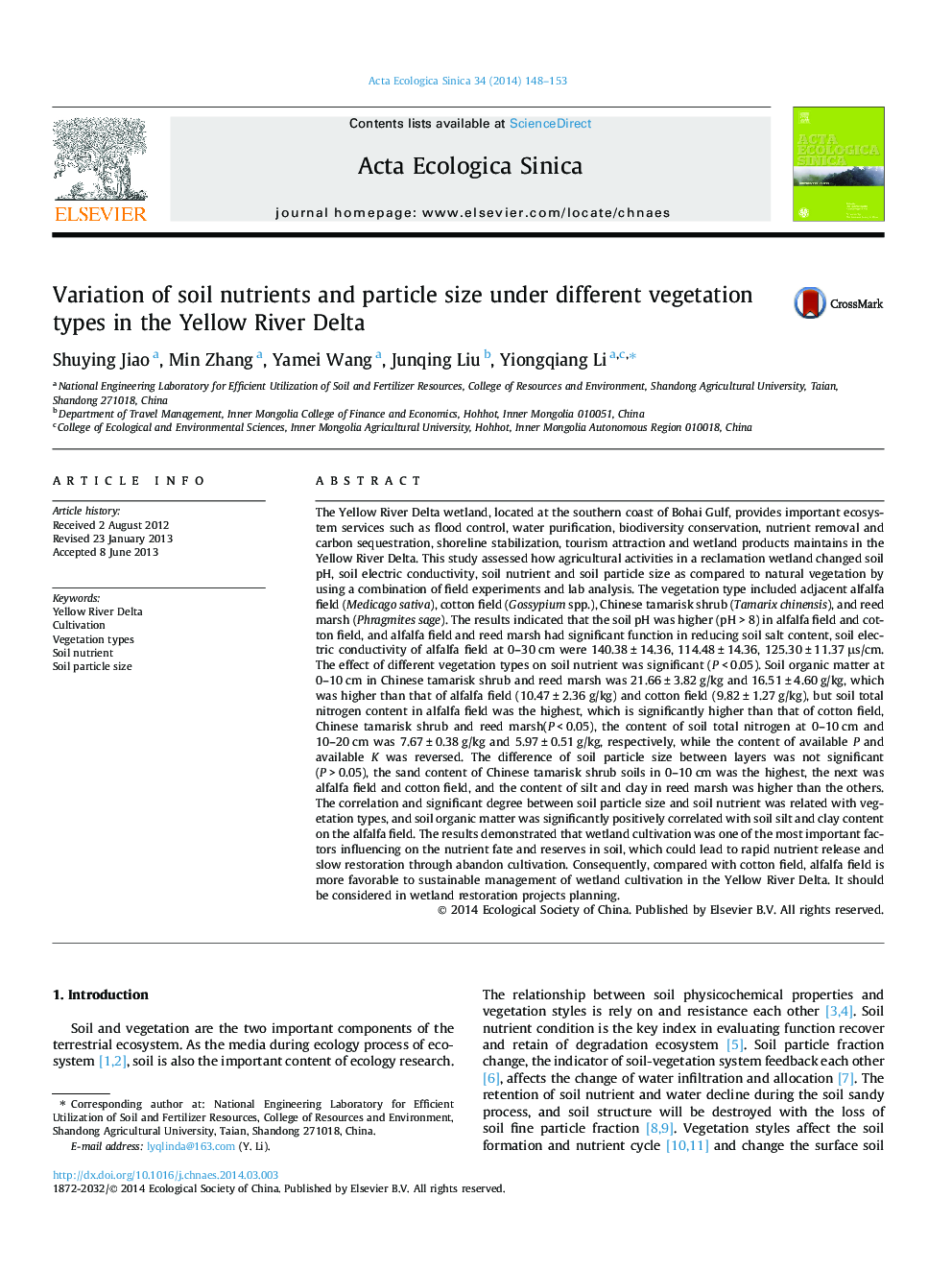| Article ID | Journal | Published Year | Pages | File Type |
|---|---|---|---|---|
| 4379918 | Acta Ecologica Sinica | 2014 | 6 Pages |
The Yellow River Delta wetland, located at the southern coast of Bohai Gulf, provides important ecosystem services such as flood control, water purification, biodiversity conservation, nutrient removal and carbon sequestration, shoreline stabilization, tourism attraction and wetland products maintains in the Yellow River Delta. This study assessed how agricultural activities in a reclamation wetland changed soil pH, soil electric conductivity, soil nutrient and soil particle size as compared to natural vegetation by using a combination of field experiments and lab analysis. The vegetation type included adjacent alfalfa field (Medicago sativa), cotton field (Gossypium spp.), Chinese tamarisk shrub (Tamarix chinensis), and reed marsh (Phragmites sage). The results indicated that the soil pH was higher (pH > 8) in alfalfa field and cotton field, and alfalfa field and reed marsh had significant function in reducing soil salt content, soil electric conductivity of alfalfa field at 0–30 cm were 140.38 ± 14.36, 114.48 ± 14.36, 125.30 ± 11.37 μs/cm. The effect of different vegetation types on soil nutrient was significant (P < 0.05). Soil organic matter at 0–10 cm in Chinese tamarisk shrub and reed marsh was 21.66 ± 3.82 g/kg and 16.51 ± 4.60 g/kg, which was higher than that of alfalfa field (10.47 ± 2.36 g/kg) and cotton field (9.82 ± 1.27 g/kg), but soil total nitrogen content in alfalfa field was the highest, which is significantly higher than that of cotton field, Chinese tamarisk shrub and reed marsh(P < 0.05), the content of soil total nitrogen at 0–10 cm and 10–20 cm was 7.67 ± 0.38 g/kg and 5.97 ± 0.51 g/kg, respectively, while the content of available P and available K was reversed. The difference of soil particle size between layers was not significant (P > 0.05), the sand content of Chinese tamarisk shrub soils in 0–10 cm was the highest, the next was alfalfa field and cotton field, and the content of silt and clay in reed marsh was higher than the others. The correlation and significant degree between soil particle size and soil nutrient was related with vegetation types, and soil organic matter was significantly positively correlated with soil silt and clay content on the alfalfa field. The results demonstrated that wetland cultivation was one of the most important factors influencing on the nutrient fate and reserves in soil, which could lead to rapid nutrient release and slow restoration through abandon cultivation. Consequently, compared with cotton field, alfalfa field is more favorable to sustainable management of wetland cultivation in the Yellow River Delta. It should be considered in wetland restoration projects planning.
